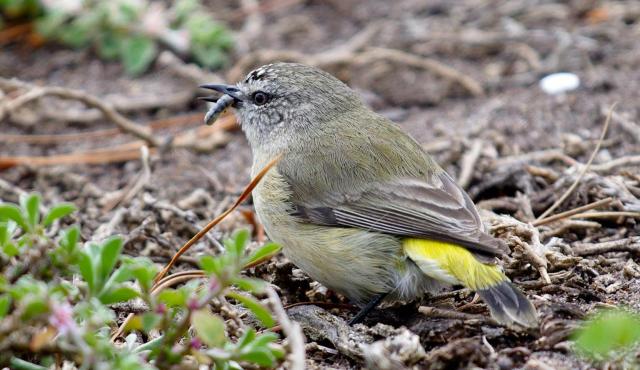A range of teacher professional learning programs will be developed to accompany the Biodiversity of the Western Volcanic Plains online outreach...


Yellow-rumped Thornbill
Acanthiza chrysorrhoa
Breeds July-December. Arboreal nests are built by a pair and often other helpers. Clutch size is three. Females incubate the eggs and the male and other helpers will feed and protect the young. The nest has a false upper section, perhaps to deter predators or cuckoos, or as a practise nest for helpers or a roosting place for fledglings or the male. This species is often found in flocks with other thornbills or ground-feeding birds.
| Details | Description |
| Type | Bird |
| Group | Thornbill |
| Other Common Names | Yellow-tailed Thornbill |
| Identifying Characteristics | |
| Distinctive Markings | Distinctive yellow rump. |
| Diet | Carnivore. Mainly insects but sometimes seeds. Ground-feeding mainly although occasionally will feed in trees or shrubs. |
| Habitat | Grassy woodlands, scrublands, farms and gardens. |
| Native Status | Native to Australia |
| Sounds | Cheery, tinkling often lasting just 3 or 4 seconds. '"chip - chip - chippity - cheepity - chippety - cheepity - wheiy - wheehoo". |
| Taxonomy | |
| Phylum | Chordata |
| Class | Aves |
| Order | Passeriformes |
| Family | Acanthizidae |
| Genus | Acanthiza |

Distribution maps indicate current and historic locations where species have been sighted.
Source: Atlas of Living Australia
| Conservation Status | |
| DEPI Advisory List | Not listed |
| FFG Act | Not listed |
| EPBC Act | Not listed |
The conservation status of species is listed within Victoria and Australia.
The Department of Environment and Primary Industry (DEPI) Advisory List consists of non-statutory advisory lists of rare or threatened flora and fauna within Victoria.
The Flora and Fauna Guarantee Act 1988 (FFG Act) lists threatened species in Victoria. Under the Act, an Action Statement is produced for each listed species.
The Environment Protection and Biodiversity Conservation Act 1999 (EPBC Act) is the Australian Government’s key piece of environmental legislation, listing nationally threatened native species and ecological communities.



